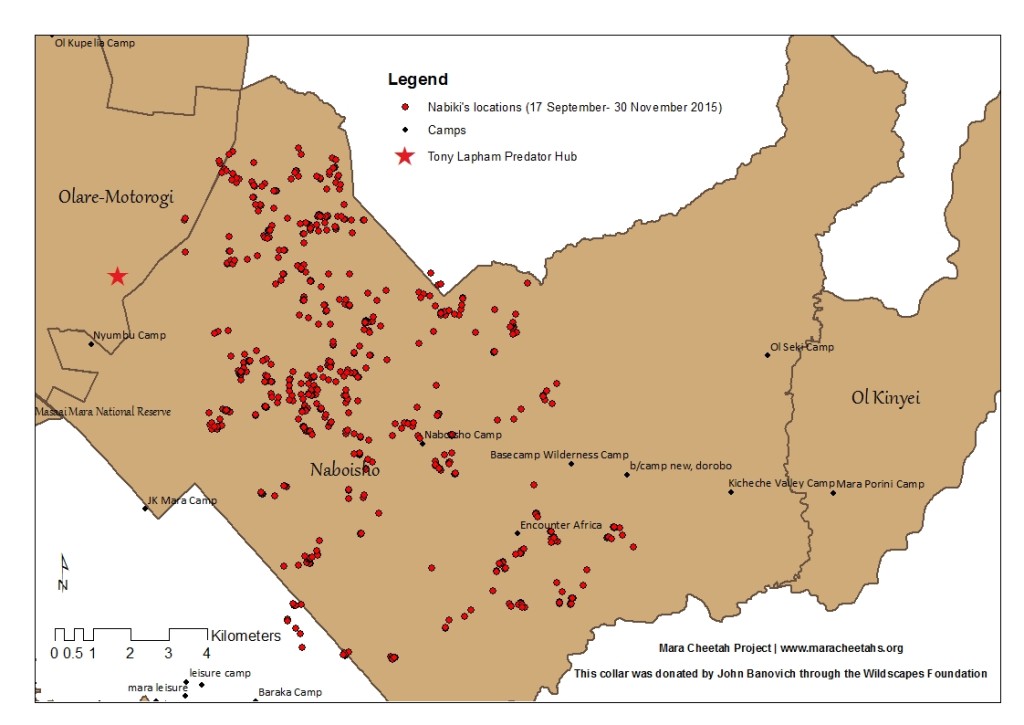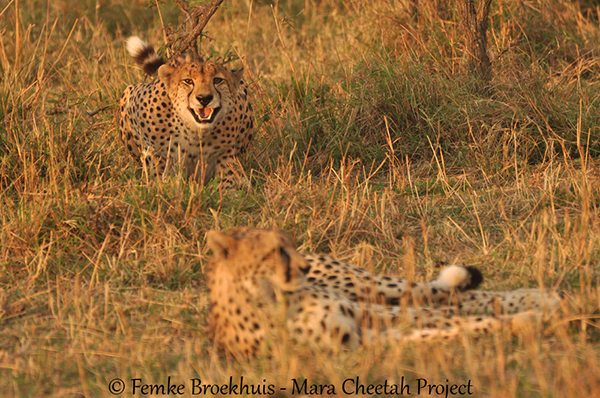Can Nabiki the cheetah help save her species?
Meet Nabiki, a born survivor.Just over 5 years old, young Nabiki was born in September 2010. At the tender age of 11 months, tragedy struck when her mother was killed by a lion. Cheetahs generally leave their mums when they are 18 months old, yet despite this setback, Nabiki’s grit and a survival instinct carried her through to adulthood. In time she has matured into a fantastic hunter, frequently seen taking down adult Grant gazelles oreven unusual prey such as young Waterbuck. With a young Waterbuck weighing in at around330-400 pounds, this is quite a feat for a 100-140 pound cheetah.
In the last couple of years, we have seen her with four different litters, but to date, she has not had much luck trying to raise them. It is natural that new mothers lose their first few litters so hopefully, she will have better luck next time.
Beyond being our beautiful and fascinating neighbourliving in the Mara, Nabiki has also become one of our allies in our quest to save her species.
Aspeciesin crisis
The global cheetah population is dwindling, with less than 7500 individuals left in the wild. The Maasai Mara is an important stronghold for the global cheetah population, but under increasing pressure as surrounding human populations increase. As human populations increase, so does the potential for habitat loss and fragmentation, disease transmission and human-wildlife conflict and ultimately the disappearance of cheetahs. The Mara Cheetah Projectaims to stand in the way of the destruction of the cheetah population in the Mara.
Data-Driven Conservation
The Mara Cheetah project hasrecently deployed a satellite collar on Nabiki, in order to study her movements and gain a unique insight into the life of a cheetah in the Mara. The collar collects location data (GPS) every two hours, which is received by the Mara Cheetah Project every few days through satellite communication. This allows the research team to continuously and intensively monitor the collared individuals.
Nabiki’s data shows that she has travelled more than 110km in the last 5 weeks and frequents the area close to the Naboisho and Encounter Mara Camps in the Naboisho conservancy.
The collar data helps the Mara Cheetah projectto identify important areas and habitats that are used by cheetahs, including wildlife corridors, helps to keep track of cubs being born, understand issues related to disease transmission and determine how prone they are to human-wildlife conflict.
Why not microchips? – The case for research collars
Our guests often have questions about the collars they see on the cheetahs while on safari. The collars can seem uncomfortable. Some have suggested that we ratheruse microchips. Unfortunately, there are strong reasons for not using microchipsfor data collection.
- Implants are far moreinvasive. In order to implant a microchip, we need to operate on the cheetah –cutting into their gut and placing the implant within the intestines.
- Microchips cannot collect data. At this time microchips can only send out a signal that can be tracked. Also, thesedevices can’t communicate with satellites if implanted under the skin.
- Weight. The battery power required to collect data makes the device too big to implant. The current collars are 400gr which is much lower than the max that can be put on an animal (about 3% of body weight) – this would be too big as an implant.
Mara Cheetah Project
The Mara Cheetah Project workstodetermine the threats faced bycheetahs in the Greater Mara Ecosystem and to develop sustainable solutions to mitigate them.To achieve this, the Mara Cheetah Project is using a research-driven conservation approach through a combination of long-term population monitoring, ecological research and community-based conservation.
Find out more about the Mara Cheetah Project and get involved here:
Website: www.maracheetahs.org
Facebook: www.facebook.com/MaraCheetahProject
Twitter: www.twitter.com/MaraCheetahs
The post Can Nabiki the cheetah help save her species? appeared first on Asilia Africa.
More Positive Impact Articles

Electric Vehicles: The Future Of East African Safari Travel?
12 January 2020October 2019 saw the arrival of our first electric, solar-powered safari vehi...

Its Our 15th Birthday: Celebrating 15 Years of Making a Genuine Difference
08 November 2019This year, we're celebrating our 15th birthday and commemorating 15 years of...

World Tourism Awards 2019: Asilia Recognised For Our Positive Impact
01 November 2019The World Tourism Awards acknowledge, reward, and celebrate excellence across...

Supersized Traditional Maasai Necklace
21 October 2019In 2009, we became a founding member of the Mara Naboisho Conservancy and sin...







